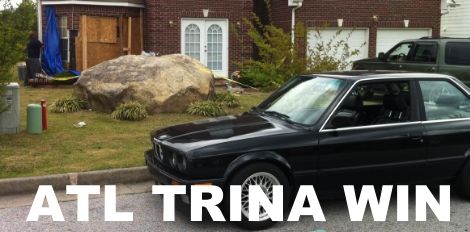Originally posted by BlackbirdM3
View Post
Announcement
Collapse
No announcement yet.
how are carb'd cars rev limited?
Collapse
X
-
Originally posted by Nate325ic View Poste30sport was already taken :dot: For all things 24v, check out Markert Motorworks!Originally posted by mbonanniI hate modded emtree, I hate modded cawrz, I hate jdm, I hate swag, I hate stanceyolokids, I hate bags (on cars), I hate stuff that is slowz, I hate tires.
For all things 24v, check out Markert Motorworks!Originally posted by mbonanniI hate modded emtree, I hate modded cawrz, I hate jdm, I hate swag, I hate stanceyolokids, I hate bags (on cars), I hate stuff that is slowz, I hate tires.
I am a pursit now.
Comment
-
While this is essentially true, it also applies to fuel injected engines and in practical application on a high performance machine would be well past the functional redline and in direct conflict with the desire for the primary engine components to remain in the same zip code with one another.Originally posted by Emre View PostWhen the engine is under load, a carb'ed engine is limited to a large degree by the size of the Venturi. Once you've hit max air flow, the engine isn't going to spin any faster.
Comment
-
That's true for fuel injection, but not carbs. The size of the venturi is the primary factor that controls air/fuel flow. If you make the venturi too big, the airflow will slow and it'll stop pulling fuel in.Originally posted by LJ851 View PostWhile this is essentially true, it also applies to fuel injected engines and in practical application on a high performance machine would be well past the functional redline and in direct conflict with the desire for the primary engine components to remain in the same zip code with one another.
It's a very different game with fuel injection.sigpic
1987 Mercedes 190E 2.3-16: Vintage Racer
2010 BMW (E90) 335xi sedan: Grocery Getter
Comment
-
Originally posted by Emre View PostThat's true for fuel injection, but not carbs. The size of the venturi is the primary factor that controls air/fuel flow. If you make the venturi too big, the airflow will slow and it'll stop pulling fuel in.
It's a very different game with fuel injection.
3/4 of the vehicles i have ever owned in my life and 2/3 of them now are carbed. Every single one was capable of going past the redline of the engine with no problem.
A large venturi affects low rpm running much more than high rpm/over rev.
In my experience it is an unusual engine design (carbed or injected) that can run out of breath before the rpm limit. Valve float is the typical reason.
A typical example would when my Ducati M900 was carbed with electronic ignition and no rev limiter (stock). Power falls off sharply at 7500 rpm and there is no point in revving past that number even though redline is 9000rpm. You can feel the bike slow down if you rev it that high. That engine will rev past well 10000 rpm no problem even at part throttle.
Comment
-
Actually, most older v8's that have hydraulic lifters do exactly this-Valve float.
the lifters pump up over about 4500 (or something) hold the valves open, and the
nut behind the wheel goes, 'oh, better shift' and grabs another gear.
But those are non- interference engines.
The simple answer- carbed engines use ignition limiting. It's a bit messier than
cutting the fuel, but it works. MSD6AL on street and race 2002's...
Those rotors with springs are a hoot- but they don't work all that well.
The drop- off in carb flow isn't really a rev limiter. It's a shift aid, but it doesn't
keep you from putting it in neutral and sending the rods out the sides of the block.
Older things had to be taken care of better....
tnow, sometimes I just mess with people. It's more entertaining that way. george graves
Comment
-
Good point.Originally posted by LJ851 View PostA large venturi affects low rpm running much more than high rpm/over rev.
I guess that's the effect I was trying to explain. You get a flat-spot at a certain point and there's no point in revving any higher. Sort of a "natural" flow-limted rev limiter.Originally posted by LJ851 View PostA typical example would when my Ducati M900 was carbed with electronic ignition and no rev limiter (stock). Power falls off sharply at 7500 rpm and there is no point in revving past that number even though redline is 9000rpm. You can feel the bike slow down if you rev it that high. That engine will rev past well 10000 rpm no problem even at part throttle.
Your point is well taken that you can keep pushing past that ... but there would be no reason to do so.
Anyway, this discussion is very interesting to me. I have limited experience with carbs (only two of my cars have had them), but I'm planning on putting twin Weber DCOE's or SK Racing carbs on the Cosworth. Been doing tons of research lately.sigpic
1987 Mercedes 190E 2.3-16: Vintage Racer
2010 BMW (E90) 335xi sedan: Grocery Getter
Comment
-
Originally posted by Emre View Post... but I'm planning on putting twin Weber DCOE's or SK Racing carbs on the Cosworth. Been doing tons of research lately.
I am a carb lover. There is an organic feel to a well set up carb that fuel injection does not possess.
ITBs will always outperform DCOEs or similar as they can be very large for max power and not suffer the ailments of a weak vacuum signal at low rpm. The carb must compromise between low rpm driveability and max power.
Run the smallest chokes that give you close to max power for best results.
And post up some pics.
Comment


Comment